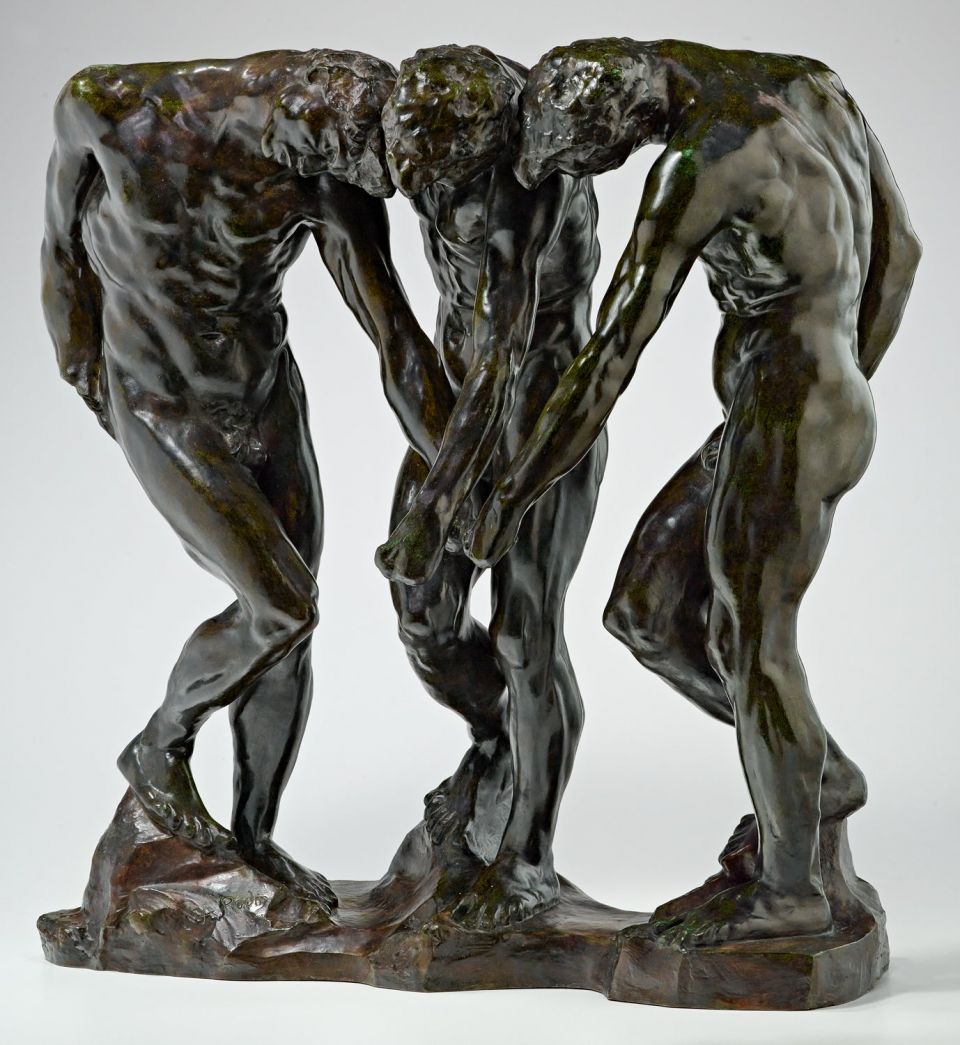If ingenuity is the lifeblood of Silicon Valley, then it’s entirely fitting that French sculptor Auguste Rodin (1840–1917) is so closely associated with the Cantor Arts Center at Stanford University, which is marking the centenary of Rodin’s death with a new presentation of his sculptures.
Rodin: The Shock of the Modern Body spans three galleries and features nearly 100 Rodin sculptures essential to telling the artist’s story and representing his groundbreaking engagement with the body. Drawn from the extensive holdings of the Cantor, the largest collection of sculptures by Rodin in an American museum, the exhibition also presents comparative works by his rivals, mentors, admirers and imitators.

Rodin’s sculpture, “The Three Shades,” is exhibited on the grounds of the Cantor Art Center. (Image credit: Courtesy Cantor Arts Center)
Much like today’s innovators, Rodin challenged himself, the academic system, his critics and the public. He did so by relentlessly pursuing new ways to convey complex emotions, diverse psychological states and pure sensuality through the nude.
At the time of his death, Rodin was counted among the most renowned artists in the world. A century later, after numerous reassessments by generations of art historians, Rodin continues to be recognized for making figurative sculpture modern by redefining the expressive capacity of the human form.
“It’s a privilege to work with the Cantor’s Rodin collection, because it was built so thoughtfully, to fully illustrate his career for teaching purposes, while also being a source of pure enjoyment,” said Elizabeth Kathleen Mitchell, the Burton and Deedee McMurtry Curator and director of the curatorial fellowship program. Iris and B. Gerald Cantor, whose generosity made possible the outstanding collection, wanted to ensure that the collection would be used for study and pleasure by scholars, the academic community and the public.
Rodin’s Burghers of Calais (1884–1895) in Memorial Court and 20 works in the Rodin Sculpture Garden, adjacent to the museum, are accessible 24 hours a day.
In the new exhibition, Rodin’s modern vision is explored through significant early works and portraits highlighting his controversial use of the fragmented body as a finished composition. While many of Rodin’s contemporaries portrayed idealized versions of the human form, Rodin used spontaneous gestures, asymmetry, varied surface textures and anatomical distortions that ranged from subtle to provocative. In this way, Rodin breathed new life into figural sculpture.
“A personal highlight for me has been spending time with the Age of Bronze,” Mitchell said. “The museum is so fortunate to have this landmark work of art, which declared Rodin’s vision to the world.”
When the work was shown at the 1877 Salon in Paris, it caused a scandal. Rodin’s work was so astonishingly life-like that his critics accused him of casting a whole body to make it. Rodin successfully proved that he had skillfully modeled the form and the scandal ultimately garnered attention, earning him the commission for The Gates of Hell (1880–1917), which is located outside the Cantor in the sculpture garden. This, as well as other significant monument projects represented in the installation, demonstrates how Rodin reinvigorated the tradition of public art.
An exciting part of the Cantor’s new exhibition is that the Susan and John Diekman Rotunda, which features Rodin’s most famous sculpture, The Thinker, will become a more open and contemplative space. The re-envisioned space will allow museum visitors to pause before Rodin’s best-known work and learn more about the history of his art at the Cantor, before moving into the larger exhibition to further explore his extraordinary talent.
Media Contacts
Margaret Whitehorn, Cantor Arts Center: (650) 724-3600, mmwhite@stanford.edu
Robin Wander, University Communications: (650) 724-6184, robin.wander@stanford.edu
